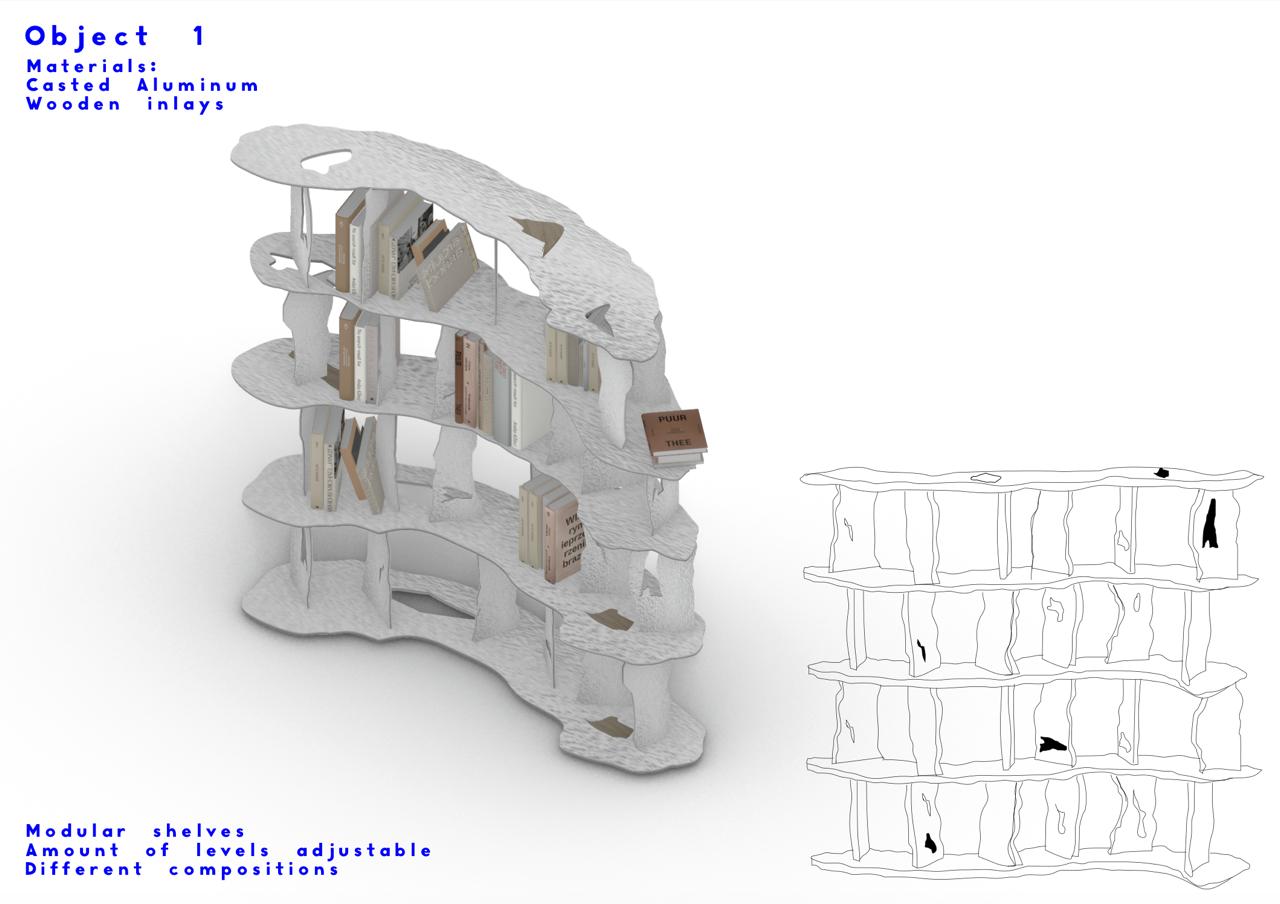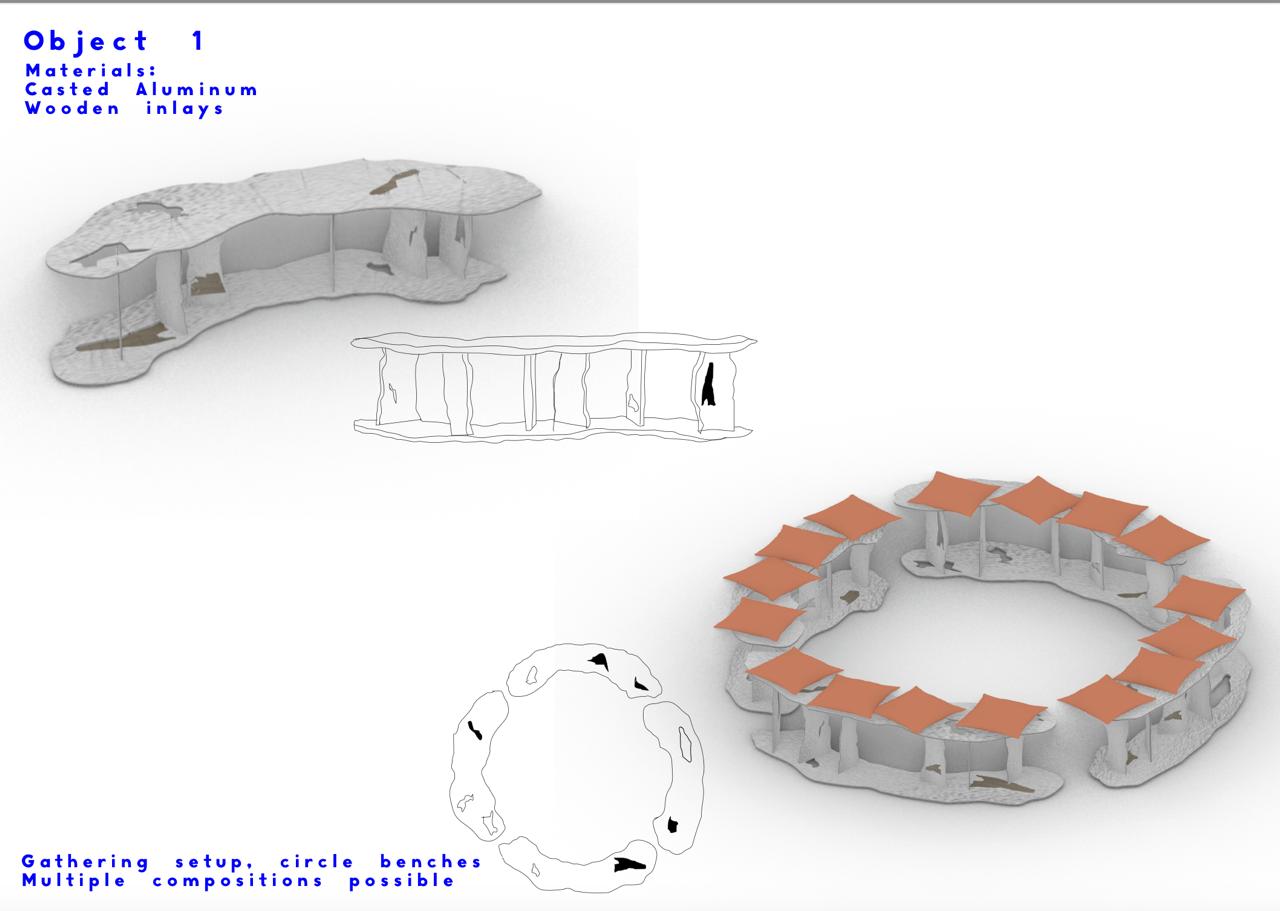



Sketch Proposal
Spatial Design ‘The Anarchive’ for Roodkapje Rotterdam (2025)
Me and Jasmijn Muskens were selected as a duo to further develop a spatial design for Roodkapje’s new Rotterdam venue and their project The Anarchive.
An archive decides what’s valuable enough to save, and how. It shapes how we remember, how we access memory, and who gets left out. It claims neutrality, but is deeply colonial and patriarchal. It leaves silences. To anarchive is to break from that. Roodkapje’s anarchive is subjective, polyvocal, and unevenly shaped.
Our design explores the tension between three terms with the same Greek root: AnARCHy, ARCHeology, ARCHive. Where archives and archaeology preserve and legitimize, anarchy disrupts and resists. The Anarchive holds that conflict—unstable, fluid, always open to reinterpretation.
We approached it as an active, material process. Like excavation, we unearth and reshape fragments to tell partial stories.
We worked with metal, a material that lives in a constant in between state: flexible but rigid, durable yet always changing. It rusts, melts, reforms. Alongside wood and stone, we used broken, cast, repurposed scraps from industries.
Visible break lines run through forms, graphic and structural cues to fragmentation. Platforms, like a reconfigurable reading table, invite gathering and reflection. There’s space for silence, too, for what’s missing or erased.
Everything is supposed to be mobile, adaptable, ready to be rearranged. Wheels, ridges, magnets, modules; tools to keep the anarchive unfixed.
Spatial Design ‘The Anarchive’ for Roodkapje Rotterdam (2025)
Me and Jasmijn Muskens were selected as a duo to further develop a spatial design for Roodkapje’s new Rotterdam venue and their project The Anarchive.
An archive decides what’s valuable enough to save, and how. It shapes how we remember, how we access memory, and who gets left out. It claims neutrality, but is deeply colonial and patriarchal. It leaves silences. To anarchive is to break from that. Roodkapje’s anarchive is subjective, polyvocal, and unevenly shaped.
Our design explores the tension between three terms with the same Greek root: AnARCHy, ARCHeology, ARCHive. Where archives and archaeology preserve and legitimize, anarchy disrupts and resists. The Anarchive holds that conflict—unstable, fluid, always open to reinterpretation.
We approached it as an active, material process. Like excavation, we unearth and reshape fragments to tell partial stories.
We worked with metal, a material that lives in a constant in between state: flexible but rigid, durable yet always changing. It rusts, melts, reforms. Alongside wood and stone, we used broken, cast, repurposed scraps from industries.
Visible break lines run through forms, graphic and structural cues to fragmentation. Platforms, like a reconfigurable reading table, invite gathering and reflection. There’s space for silence, too, for what’s missing or erased.
Everything is supposed to be mobile, adaptable, ready to be rearranged. Wheels, ridges, magnets, modules; tools to keep the anarchive unfixed.